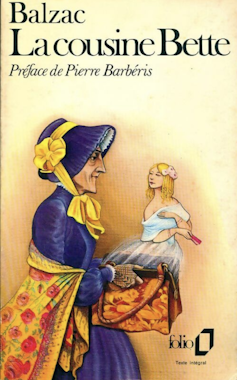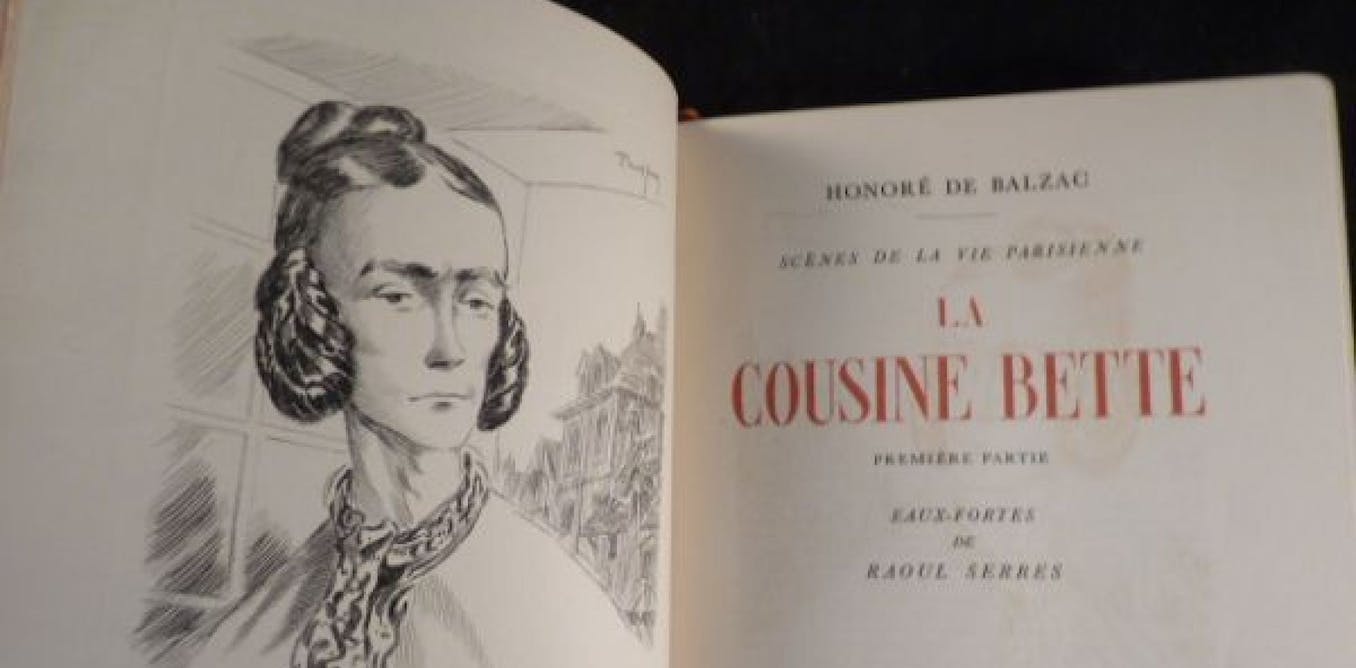You only have to hear the word “spinster” to conjure up the age-old stereotype of a woman in her forties, single and sexually inactive, living alone or with a few cats. Ideally, she will be quite ugly, a little bitter, if not downright nasty, recalling our representations of witches. Feminist theorists have been questioning and criticizing this figure for decades, whose presence in our collective imagination serves above all as a threat to women who decide not to marry or refuse to become mothers.
When we look at the history of these representations, it’s hard to avoid Balzac and his colossal Human Comedy (in French: ‘La Comédie Humaine’), in which portraits of old maids intersect and resemble each other to the point of constituting a social type. And were those patterns not incriminating enough, one of his novels is entitled Spinster (Vieille fille).
Wikimedia
The spinster, public enemy number one
Why did Balzac create a stigmatising “type” for unmarried middle-aged women? It would seem that the starting point was his pure and simple detestation of celibacy, a state he considered “unproductive” and “contrary to society”. He writes
“By remaining unmarried, a creature of the female sex becomes void of meaning; selfish and cold, she creates repulsion. This implacable judgment of the world is unfortunately too just to leave old maids in ignorance of its causes. ” (Balzac, The Celibates: The Vicar of Tours; in French:‘Les Célibataires – Le Curé de Tours’).
In the preface to his novel Pierrette, he goes so far as to recommend reviving a bill dating back to the Revolution that sought to impose an additional tax on unmarried people. Although he denies suffering from “singlephobia”, Balzac’s deep aversion toward those were unable to found a family, and above all give birth, is striking. Also bear in mind that both men and women are targeted by his reproaches – and while the portraits of effeminate and ridiculous churchmen or bachelors driving their families to ruin, are beyond the scope of this article, they are very much present in The Human Comedy.
But the figure of the old maid receives special satirical attention. Indeed, it appears that the deep empathy that the “women’s novelist” usually shows towards women stops at those who do not fulfil themselves in marriage and motherhood.
Read more:
Relire Balzac à l’ère des humanités numériques
Of course, this rejection didn’t come out of nowhere, and the stigmatisation of celibacy wasn’t invented by Balzac, with the idea of an additional tax dating back to antiquity. However, it was Balzac who gave the figure of the old maid its letters of nobility – so to speak – through a series of portraits that show us several variations of characters linked to the stereotype of the single woman. In The spinster, he light-heartedly pokes fun at the naivety of a woman so uneducated in the ways of love that she fails to marry; in Cousin Bette (‘La cousine Bette’), he describes the manipulations of an old maid prepared to do anything to ruin her own family, drawing from the aesthetics of the witch in no uncertain terms. Finally, in The Vicar of Tours and Pierrette, he paints an almost identical double portrait of two embittered, penny-pinching and ugly spinsteresses conducting those around them to their ruin. In the course of the novellas, the figure of the spinster as we know it today emerges as a woman who suffers from a laughable ignorance in all things sexual, a boring existence, and ultimately, vicious nature.
It is important to note there is a certain paradox in the way Balzac characterises these characters. On the one hand, he criticises celibacy as an unproductive and unnatural lifestyle choice. On the other, he seems intent on showing that this celibacy is not a choice, but stems from the profound nature of his protagonists, for whom celibacy is an absolute inevitability from which they will never escape. Here, celibacy appears less as a free choice than as a state of affairs almost tantamount to asexuality.
Read more:
Le « feminist gaze » : quand les femmes écrivent en féministes
Now if Balzac detests celibacy, he equally detests the idea of a forced or unhappy marriage, whose disastrous effect on women’s health and psyche he denounces in his novel The 30-year old woman (‘La femme de 30 ans’). It therefore appears strange to point the finger at celibacy, which is perhaps the only alternative to undesired marriage.
So why does the 19th century writer view single women so harshly, framing them in parasitic terms? First of all, non-maternity is at issue:
“They grow sharp and peevish because all human beings who miss their vocation are unhappy; they suffer, and suffering gives birth to the bitterness of ill-will” (Balzac, The Celibates: The Vicar of Tours)
The absence of desire and love is also singled out, especially as Balzac sees desire as a powerful driving force in his novels, pushing his characters to fulfil their role as heroes. It is a lack of love in the broadest sense that characterises Balzac’s spinster daughters. Deprived of romantic or marital affection, they are also incapable of developing family love: Sylvie Rogron tortures her young cousin to death, Cousin Bette manipulates her entire family to plunge them into misery and achieve her ends. The message is clear: the single woman is a danger to the family, the structure underpinning traditional society. She is thus transformed into a terrifying, even monstrous figure, and often bestialised. What is most frightening about the spinster is her independence, her profound inability to be subject to a man.
A disturbing absence of sex life
It is this freedom, so unsuited to women as they were thought of in the 19th century, that Balzac demonises. Under his pen, old maids lose their femininity and almost systematically acquire a form of androgyny.
So a woman without a man or children, without the desire to be desired, appears to Balzac to cease to be a woman at all. The debate is far from over: in France, we think of Marie Kock’s essay, Spinster (‘Vieille fille’) published in 2022, or the essay by the writer and former porn actress Ovidie, Alas, the flesh is sad (La chair est triste hélas) or her documentary series on national radio France Culture on her life without sex. Not having a sex life, or even claiming it, for a short period or throughout one’s life, continues to disturb society.

When the Balzacian heroine is not possessed by a husband or lover, the forces are reversed, with male domination turned upside down. Mademoiselle Gamard, Sylvie Rogron and Cousin Bette subjugate the men around them in an unnatural ascension. Seen from this angle, the female celibacy portrayed in La Comédie Humaine takes on an anarchic, almost revolutionary quality, capable of threatening age-old institutions.
And while Balzac is at pains to show us his deep detestation of these dangers, we also sense a certain fascination with the profound immorality of his terrible bachelors. After all, one of his most delightful novels, Cousin Bette, is driven by its vicious, sapphic anti-heroine and her Machiavellian schemes, which he describes with obvious glee, making her, more or less in spite of himself, far more charismatic and memorable than her “respectable” peers.


